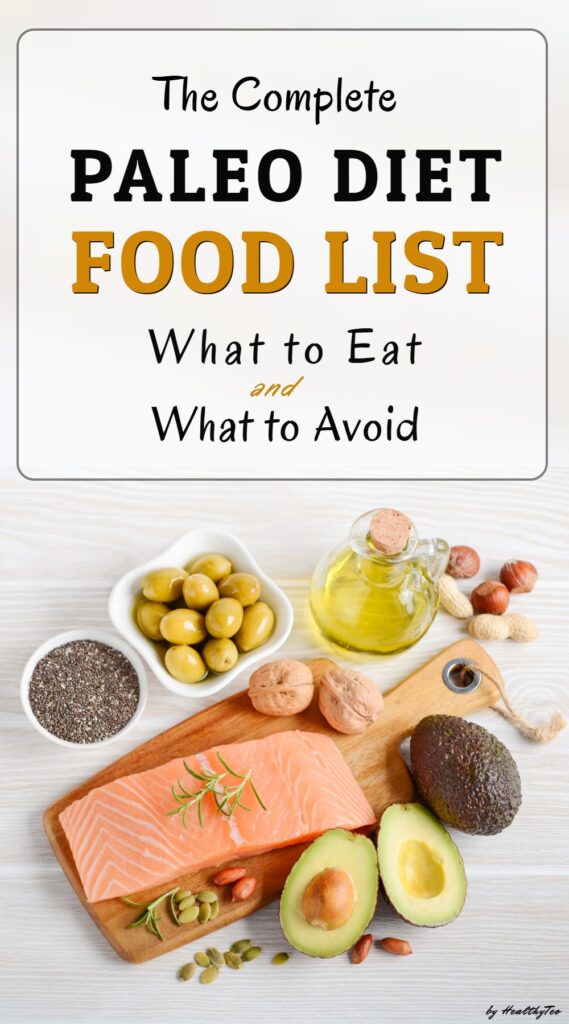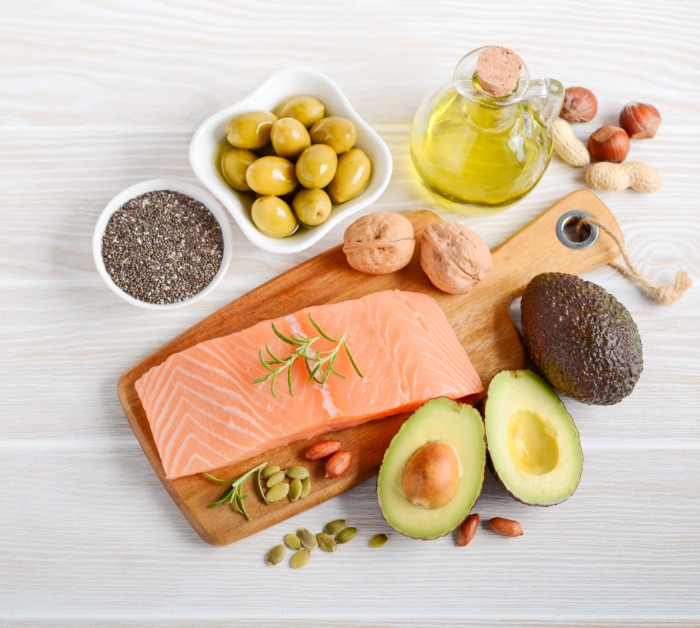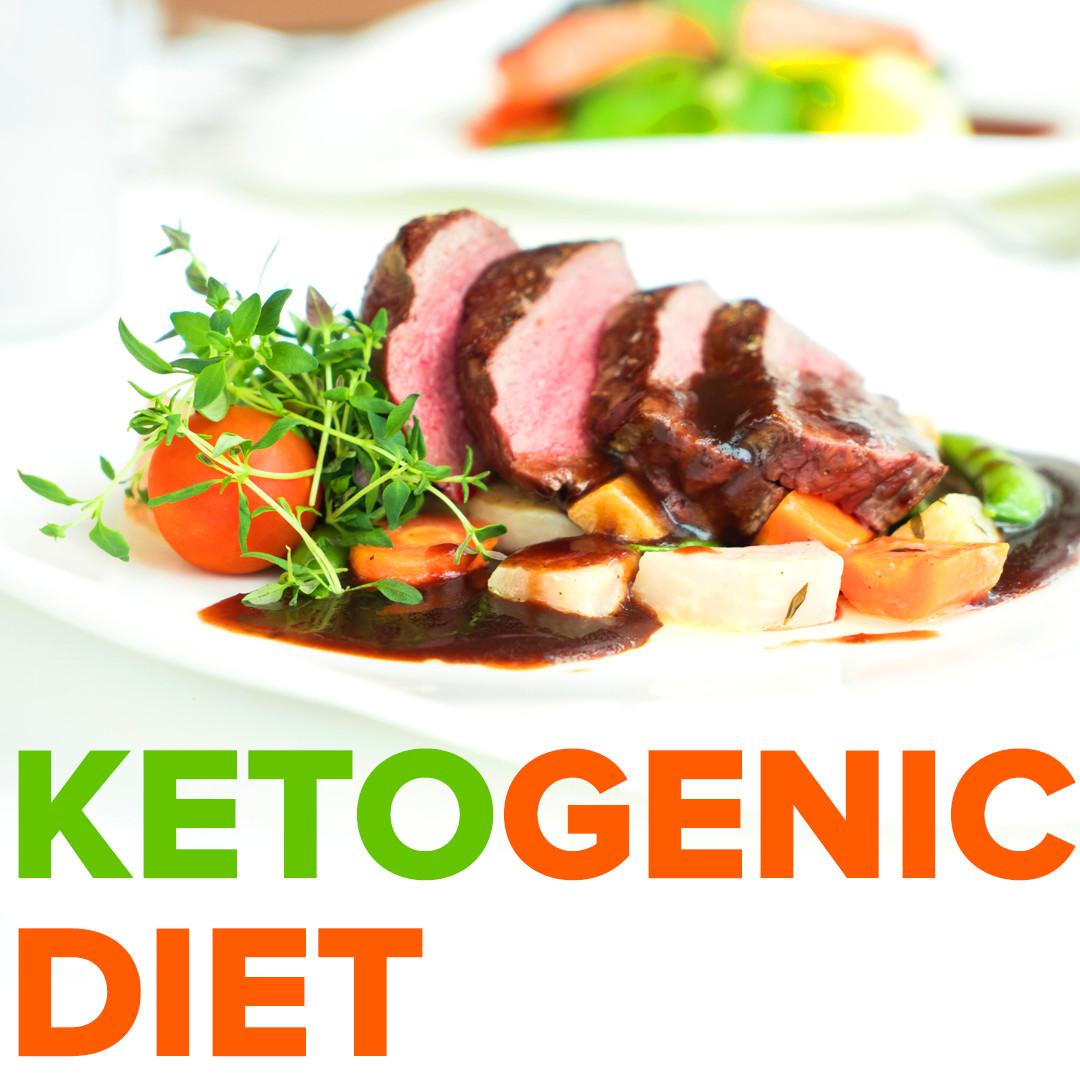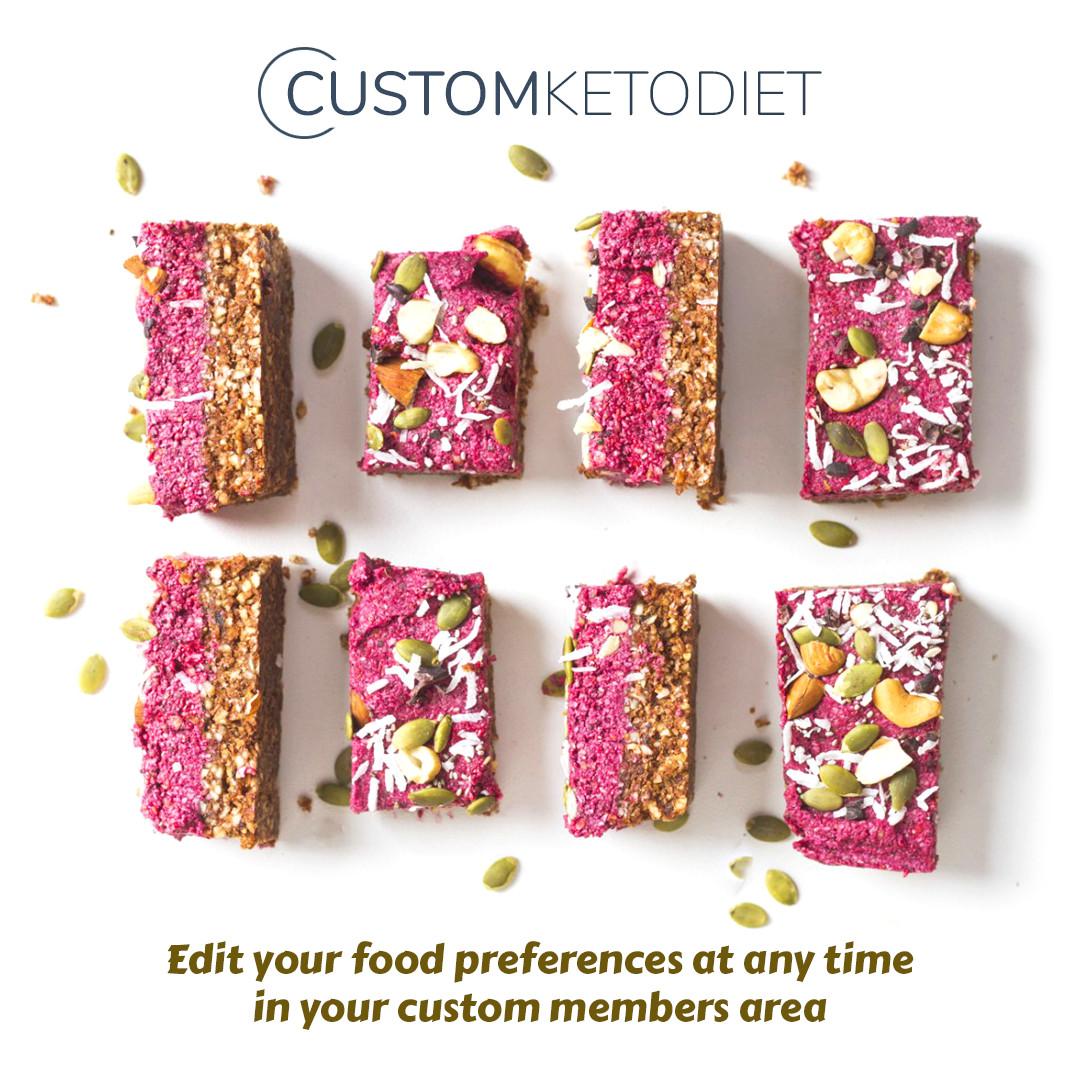Paleo diet food list
If you decide to follow the paleo diet you will eat many unprocessed foods. This diet is based on higher protein consumption with less emphasis on starchy carbs, dairy products, and sugars.
The paleo diet includes foods our hunter-gatherer ancestors ate. Foods that don’t require any technology to produce are part of the paleo diet.
The basic idea of the paleo diet is to focus on more whole foods like vegetables, fruits, proteins, healthy fats and eliminating sugar, processed foods, and added salt. Also, on this diet, you will need to avoid entire food groups like legumes, dairy, and grains.
Here is a short list of foods to eat and avoid on the paleo diet. We will show you detailed foods for the paleo diet below.

Foods to eat
- Fresh fruits
- Fresh vegetables
- Grass-fed meats
- Fish and seafood
- Nuts and seeds
- Eggs
- Healthy oils (olive, avocado, coconut, etc)
Foods to avoid
- Processed foods
- Refined sugar
- Dairy
- Legumes
- Cereal grains
- Overly salty food
- Refined vegetable oils
- Artificial sweeteners
A detailed list of foods to eat on a paleo diet

Proteins
An average person needs about 7 grams of protein every day for every 20 pounds ( 9kg) of body weight. Protein is a staple on the paleo diet. Most meat and seafood are fits on a paleo diet. Meat and a variety of seafood are great sources of protein. When choosing meat for the paleo meals watch out for pre-marinated and cured meats that may contain added sugars.
The best paleo proteins include:
Grass-fed meat
- Beef
- Lamb
- Pork
- Veal
- Bison
- Goat
- Steak
- Bacon (nitrate-free preferred)
Game meat
- Wild Boar
- Rabbit
- Moose
- Elk
Poultry
- Chicken
- Turkey
- Goose
- Duck
- Quail
One of the most important foods on the paleo diet food list is grass-fed meat. Grass-fed meat is recommended because it contains less total fat than grain-fed animals, but a lot more omega-3 fatty acids, and other nutrients.
Furthermore, when it comes to meat on the paleo diet try to look for chicken raised without antibiotics and try to source your meat from a local farm.
Fish ( wild-caught preferred )
- Tuna
- Salmon
- Herring
- Cod
- Sardines
- Anchovies
- Trout
- Bass
- Haddock
- Mackerel
- Turbot
- Walleye
- Grouper
Shellfish ( wild-caught preferred )
- Lobster
- Clams
- Crab
- Shrimp
- Oysters
- Mussels
- Crawfish
- Scallops
Choosing wild seafood over farm-caught may help boost your omega-3 intake. Fish and other types of seafood are an excellent source of protein, omega-3s, vitamin A, C, and E.
Also, seafood contains two essential minerals like iodine and selenium. Always look for wild salmon and other sustainably caught seafood when you’re making your paleo meals.
Eggs
The whites of eggs provide protein and are very low in fat and calories, while the yolk contains important vitamins and minerals. When purchasing eggs always look for eggs labeled “organic” and “cage-free”.
This ensures that eggs come from chickens that are free-roaming, and are not given antibiotics or hormones. Eggs that come from “cage-free” chickens are normally much higher in omega-3 fatty acids than non-cage-free eggs.
Carbs
The paleo diet tends to be low in carbohydrates. If you want to add some more carbs into your meals you can add some starchy foods that are also part of the paleo diet:
Starchy vegetables
- Butternut Squash
- Acorn Squash
- Sweet potatoes
- Beets
- Yams
These vegetables are quite starchy. Eat them in moderation especially if you are trying to follow the paleo diet for losing weight.
Sugary fruits
- Figs
- Dates
- Apples
- Oranges
- Bananas
- Tangerines
- Guava
- Pineapple
- Papaya
- Pears
- Peaches
- Mangos
- Grapes
Healthy fats
Less processed oils, nuts, and seeds are a great source of plant-based fats and they are allowed on the paleo diet. Natural fats and oils are your body’s preferred sources of creating energy. Here are the best paleo diet fats and oils that you should consume:
Oils and butter
- Olive oil
- Coconut oil
- Coconut butter
- Avocado oil
- Macadamia oil
- Ghee
Nuts and seeds
- Hazelnuts
- Walnuts
- Pecans
- Cashews
- Chia seeds
- Pine nuts
- Flax seeds
- Pecans
- Sunflower seeds
- Almonds
- Pumpkin seeds
- Sesame seeds
Nuts and seeds should be eaten in moderation and are regarded more as a garnish or a snack and not as a main ingredient. Nuts and seeds are full of fiber, protein, and healthy fats ( see what are the best edible seeds and the benefits of consuming them).
A small handful of nuts or seeds over your salad or trail mix is just enough to add healthful fats to your paleo meals. You should know that peanuts are not considered paleo because they are technically legumes.
Paleo vegetables
- Celery
- Tomatoes
- Onions
- Kohlrabi
- Leeks
- Eggplants
- Cauliflower
- Broccoli
- Cucumber
- Asparagus
- Cabbage
- Brussels sprouts
- Artichokes
- Okra
Green leafy vegetables
- Spinach
- Lettuce
- Kale
- Beet top
- Mustard greens
- Swiss chard
- Watercress
- Turnip greens
- Seaweeds
- Arugula
- Radicchio
Root vegetables
- Beets
- Carrots
- Turnips
- Sweet potatoes
- Radish
- Yams
- Cassava
Vegetables are the most important food group of the paleo diet. Almost all vegetables are considered paleo. Vegetables with a high starch content that we’ve mentioned above like potatoes and squashes tend to have lower nutritional value in comparison amount of carbs, starches, and sugars they contain.
If you are trying to lose weight or watch your blood sugar levels, eat these starchy vegetables in moderation. For some strict versions of the paleo diet potatoes are completely banned. Also, it is good to know that frozen vegetables without added sauce are also allowed on a paleo diet.
Paleo fruits
- Berries: including blackberries, strawberries, blueberries
- Apples
- Bananas
- Grapefruit
- Pears
- Peaches
- Nectarines
- Plums
- Pomegranates
- Pineapple
- Papaya
- Apricot
- Grapes
- Mango
- Dates
- Lemon
- Lime
- Kiwi
- Plums
Every fresh or dried fruit as long as no sugar is added is part of the paleo diet food list. When it comes to fruits as part of the paleo diet many people who want to follow the paleo diet wonder if bananas are part of the paleo diet allowed foods, due to their high sugar content.
The simple answer is YES, bananas are considered paleo. One medium ripe banana provides about 110 calories, 0 grams fat, 1 gram protein, 28 grams carbohydrates, 15 grams sugar, 3 grams fiber, and 450 milligrams of potassium.
As you can see they are a great source of potassium and they are unprocessed food, definitely part of the paleo diet foods that you should consume.
Herbs and spices
- Ginger
- Garlic
- Onions
- Black pepper
- Basil
- Cilantro
- Mustard
- Capers
- Cinamon
- Nutmeg
- Paprika
- Cloves
- Vanilla
- Oregano
- Sage
- Bay leaves
- Coriander
Paleo sweeteners
Not all sweeteners are forbidden on the paleo diet. Here are some of the sweeteners that are allowed:
- Raw honey
- Maple syrup
- Date paste
- Coconut sugar
Drinks
- Water
- Black coffee (no cream or sugar)
- Coconut water
- Bone broth
- Unsweetened teas
- Kombucha
- Sparkling water (no added sugar or artificial sweetener)
Foods to avoid on the paleo diet
If you decide to follow the paleo diet you should know that many common foods are not allowed for consumption on this eating pattern. Here is a detailed list of foods that aren’t allowed on the paleo diet:
Grains
- Wheat
- Corn
- Barley
- Oats
- Rye
- Brown rice
- Millet
- Bulgur
- Spelt
- Couscous
- Quinoa
- Pasta
- Bread
- Crackers
All grains are not allowed for consumption on the paleo diet. Grains are a product of modern agriculture and are high in carbohydrates which can spike your blood sugar.
Paleo dieters avoid grains because they contain gluten, lectins, and phytates, which they claim cause inflammation in the body and block other nutrients from being absorbed.
On the other hand, paleo critics say that these compounds are not a problem unless you have a sensitivity or an allergy. There are many different opinions about these types of foods, but if you follow the strict paleo diet, grains are not allowed for consumption.
Legumes
- Beans
- Lentils
- Soybeans
- Chickpeas
- Green peas
- Tofu
- Miso
- Peanuts
Legume is a general term used to describe the seeds of plants from the legume family, which includes peas, lentils, beans, and peanuts. Peanut butter and soy sauce are also not allowed on a paleo diet.
The main reason why legumes are not allowed on a paleo diet is that they contain high content of phytic acid and lectins. Despite the fact that legumes are low in fat and high in fiber, protein, and iron, they are not allowed on the paleo diet.
Same issues as with grains, there are many different claims whether legumes are good or bad for consumption, but on this diet, they are certainly forbidden.
Dairy
- Milk
- Cheese
- Cottage cheese
- Ice cream
- Cream
- Butter
- Yogurt
A strict paleo diet doesn’t allow dairy of any form to be consumed. Some people still like to include some forms of dairy like yogurt, sour cream, or kefir.
Fermented forms are better for the human body. So dairy falls into a grey zone, some people who follow the paleo diet consume fermented dairy products while others don’t.
Processed foods
Processed cooking oils
- Sunflower oil
- Soybean oil
- Corn oil
- Palm oil
- Safflower oil
- Grapeseed oil
Refined and artificial sweeteners
- Aspartame
- Saccharine
- Sucralose
- Cane sugar
- Xylitol
- Erythritol
- Brown sugar
- Agave
- Corn syrup
Processed meats
- Hot dogs
- Spam
- Other low-quality meats
Salty foods and snacks
- French fries
- Potato chips
- Popcorn
- Pretzels
- Cookies
- Pastries
- Fruit gummies
Alcohol and energy drinks
- Beer
- Sweet wines
- Sweetened alcoholic drinks
All food that has been canned, frozen, packaged, or changed in nutritional composition with fortifying, preserving, or preparing in different ways is considered processed food and is not allowed on the paleo diet.

Foods for paleo diet – final thoughts
The paleo diet plan looks restrictive. If you follow the strict paleo diet you need to exclude large food groups from your diet. There are some concerns that by not consuming legumes, grains, dairy you will miss adding some important nutrients to your diet.
On the other hand, many people enjoy the freedom of this diet because they don’t need to count calories or other micronutrients. Some people also don’t follow the strict rules of the paleo diet and they consume dairy, legumes, and grains in moderation.
If you are not sure if this eating pattern is good for you here you can read about the pros and cons of the paleo diet, and decide is it good for you.
If you like this type of eating and decide to follow it, it is good to talk with your doctor before starting about how the paleo diet and recommended foods may impact your health.
Never make big changes in your diet before consulting first with a nutritionist or your doctor to determine what is best for you.




